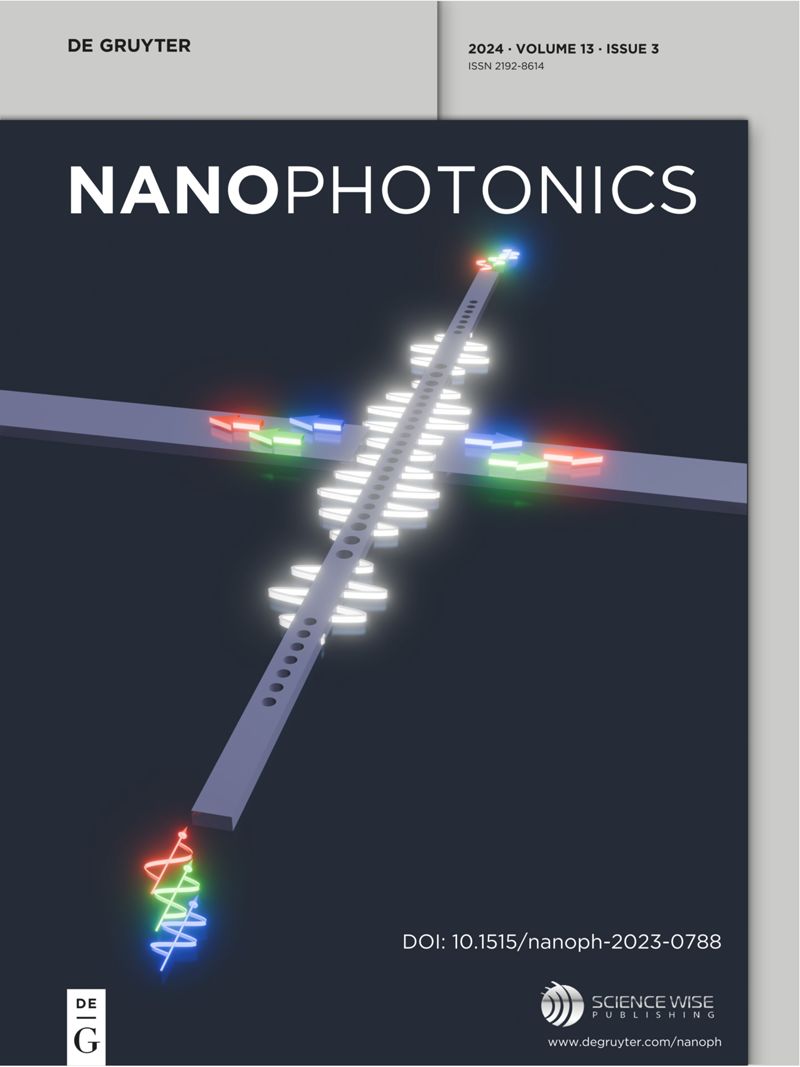Multifunctional metasurface coding for visible vortex beam generation, deflection and focusing
IF 6.5
2区 物理与天体物理
Q1 MATERIALS SCIENCE, MULTIDISCIPLINARY
引用次数: 0
Abstract
Vortex beams, as beams carrying orbital angular momentum (OAM), exhibit unique donut-shaped intensity distributions and helical wavefronts. They are widely applied in fields such as optical communication, nanoparticle manipulation, and quantum information. Traditional vortex beam generation methods, such as those based on Pancharatnam–Berry phase design, can effectively generate vortex beams, but the conversion efficiency and design flexibility are limited by polarization states and incident angles. In addition, the generated and propagated vortex beams require separate metasurface for wavefront deflection and refocusing for practical applications. This work proposes a novel metasurface design approach based on resonant phase, where phase coverage of 2用于可见涡旋光束产生、偏转和聚焦的多功能超表面编码
涡旋光束作为携带轨道角动量(OAM)的光束,表现出独特的甜甜圈状强度分布和螺旋波前。它们被广泛应用于光通信、纳米粒子操纵和量子信息等领域。传统的涡旋光束产生方法,如基于Pancharatnam-Berry相位设计的涡旋光束产生方法,可以有效地产生涡旋光束,但其转换效率和设计灵活性受到偏振态和入射角的限制。此外,在实际应用中,涡旋光束的产生和传播需要单独的超表面来进行波前偏转和再聚焦。这项工作提出了一种新的基于共振相位的超表面设计方法,其中通过改变纳米圆柱体的半径来实现2π的相位覆盖。除了有效地在可见光区产生涡旋光束外,我们还解决了同时控制涡旋光束异常偏转和重聚焦的挑战,通过基于傅里叶卷积和超构设计原理的不同编码序列叠加。这种一体化多功能超表面设计为安全光通信和量子操纵应用提供了新的技术途径。
本文章由计算机程序翻译,如有差异,请以英文原文为准。
求助全文
约1分钟内获得全文
求助全文
来源期刊

Nanophotonics
NANOSCIENCE & NANOTECHNOLOGY-MATERIALS SCIENCE, MULTIDISCIPLINARY
CiteScore
13.50
自引率
6.70%
发文量
358
审稿时长
7 weeks
期刊介绍:
Nanophotonics, published in collaboration with Sciencewise, is a prestigious journal that showcases recent international research results, notable advancements in the field, and innovative applications. It is regarded as one of the leading publications in the realm of nanophotonics and encompasses a range of article types including research articles, selectively invited reviews, letters, and perspectives.
The journal specifically delves into the study of photon interaction with nano-structures, such as carbon nano-tubes, nano metal particles, nano crystals, semiconductor nano dots, photonic crystals, tissue, and DNA. It offers comprehensive coverage of the most up-to-date discoveries, making it an essential resource for physicists, engineers, and material scientists.
 求助内容:
求助内容: 应助结果提醒方式:
应助结果提醒方式:


